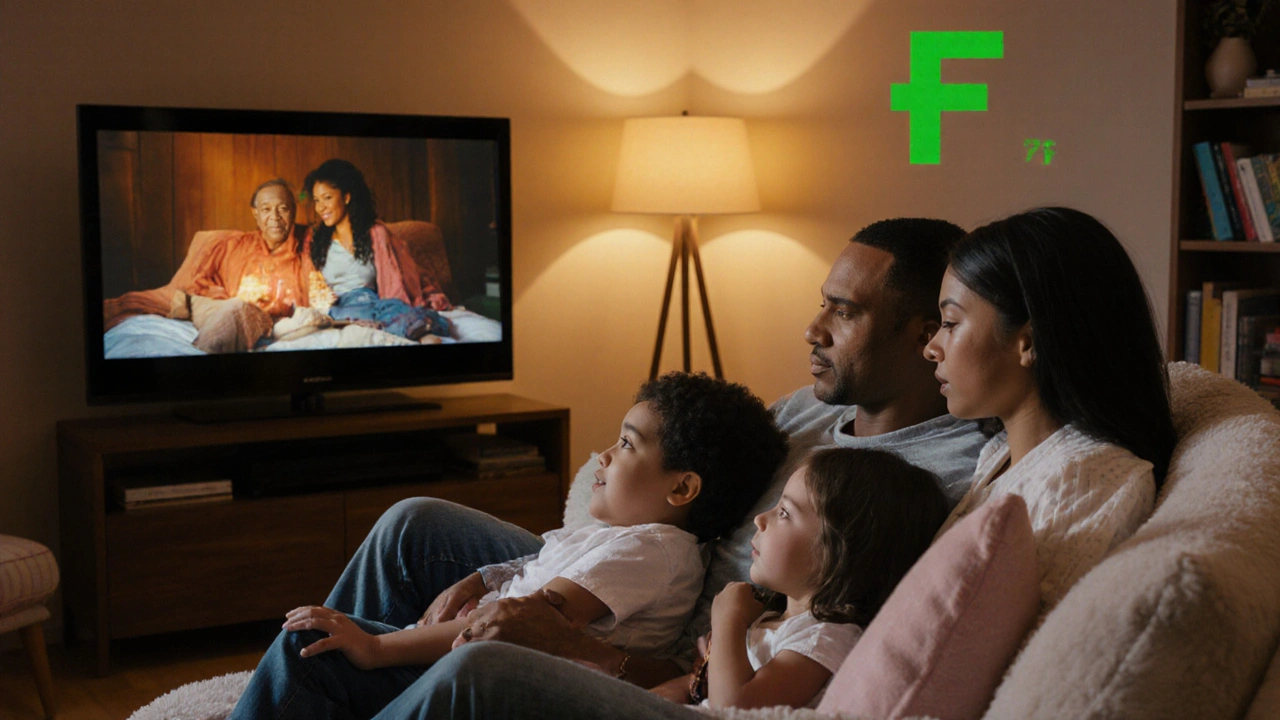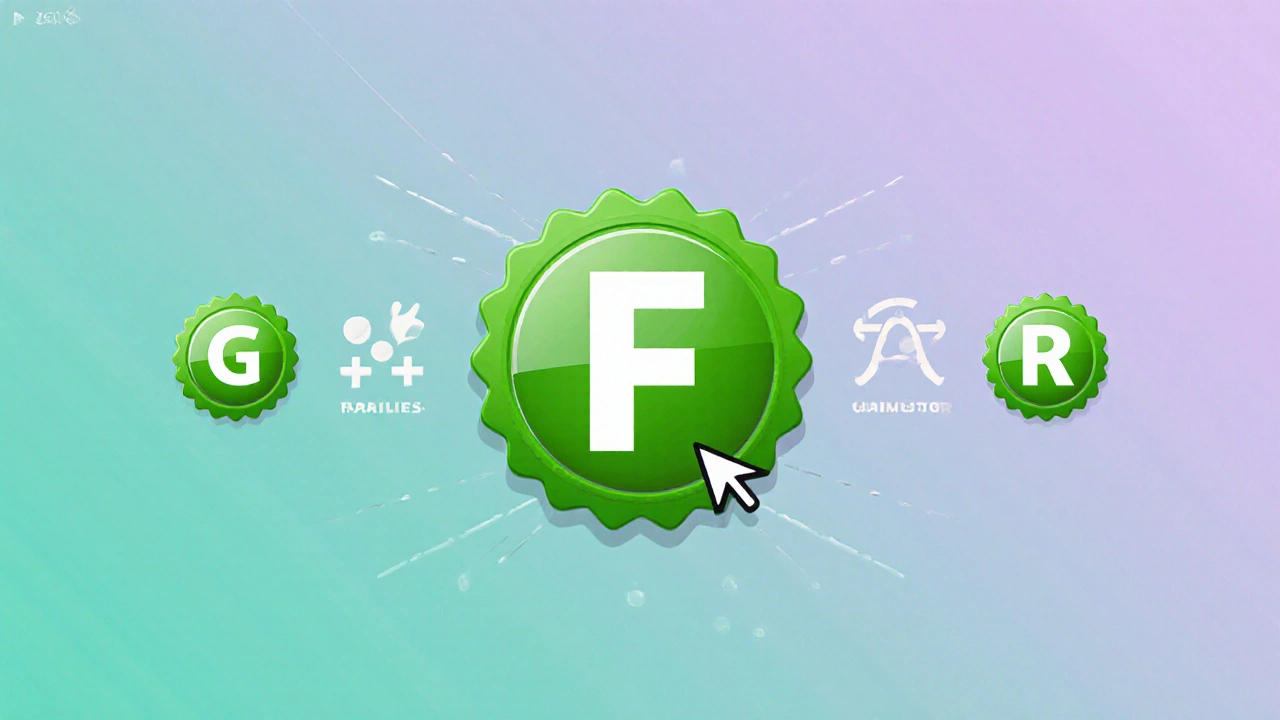F-Rating Comparison Tool
Compare Movie Ratings
Enter a movie title to see how it would be rated across different systems, including F, MPAA, and BBFC ratings. This tool uses the criteria described in the article to provide accurate comparisons.
Rating Comparison Results
Criteria Assessment
Recommendation
When a streaming service tags a title with an F, most viewers assume it’s a simple "family‑friendly" sign. But the reality is a bit more nuanced: the "F" label isn’t part of the traditional MPAA or BBFC systems; it’s a platform‑specific rating created to help parents and casual viewers filter content quickly.
What Exactly Is an “F” Rating?
F rating is a custom classification used by several streaming platforms and some regional boards to denote films that are suitable for all ages, with no strong language, intense violence, or adult themes. Unlike the U.S. Motion Picture Association’s (MPAA) G, PG, or R categories, the F rating was introduced in the mid‑2010s when on‑demand services needed a quick visual cue for families scrolling through thousands of titles.
Where Does the F Rating Appear?
The most common places you’ll see the F badge are:
- Netflix’s “Kids” section, where titles are marked with a tiny green F icon.
- Amazon Prime Video’s parental‑control filter, which lets you block anything that isn’t labeled F.
- Regional boards in Canada and Australia that have introduced an “F” category alongside their standard age‑based codes.
In each case, the rating is applied by the platform’s content‑review team, not by a government agency. That means the criteria can shift slightly from one service to another.
How Platforms Define the F Rating
Although the exact checklist varies, most providers agree on a core set of standards:
- No explicit sexual content or nudity.
- Violence is limited to slap‑stick or fantasy action that is clearly unrealistic.
- Language is restricted to mild profanity (e.g., "damn" or "hell").
- Drug use, gambling, or heavy alcohol consumption is either absent or portrayed in a non‑glorifying way.
This framework mirrors what the British Board of Film Classification (BBFC) calls "U" (Universal) but adds a stricter lens on language and subtle adult themes, ensuring the content truly feels safe for younger viewers.
F Rating vs. Traditional Rating Systems
To see the practical differences, compare the F badge against the familiar MPAA and BBFC symbols:
| Rating | Age Range | Allowed Content | Typical Platform Use |
|---|---|---|---|
| F | All ages | Gentle fantasy/animation, mild language, no graphic violence | Netflix, Prime Video, regional boards (Canada, Australia) |
| G (MPAA) | All ages | Very low impact content, limited language | Theatrical releases, DVD/Blu‑ray |
| PG (MPAA) | All ages, parental guidance suggested | Some mild thematic elements, limited language | Theatrical releases, home video |
| U (BBFC) | All ages | Broadly suitable, occasional mild horror or fantasy violence | UK theatrical and home releases |
| PG‑13 (MPAA) | 13+ | More intense action, stronger language | Major studio releases |
| R (MPAA) | 17+ | Strong language, explicit violence, sexual content | Adult‑targeted theatrical releases |
Notice that the F rating sits somewhere between G/U and PG, but it leans more conservative on language and thematic depth than a typical PG film. The goal is to give parents a single‑click assurance that the movie won’t surprise them with anything that feels out of place for a child.
Real‑World Examples of F‑Rated Movies
Here are a few titles that most platforms label with an F:
- Finding Nemo - Bright animation, gentle adventure, no profanity.
- Paddington 2 - Lighthearted comedy, mild peril, clean language.
- My Neighbor Totoro - Whimsical fantasy, no violence, universally gentle tone.
- Spirited Away (edited version) - Some streaming services offer a “family edit” that strips out the darker spirits, earning an F badge.
These movies illustrate the sweet spot the F rating tries to hit: engaging storytelling for kids without the need for parental supervision.
How to Find F‑Rated Movies on Your Favorite Platforms
Most services embed the rating in their UI filters. Here’s a quick cheat‑sheet:
- Netflix: Go to the Kids profile, then select “Age‑Appropriate” and look for the green F icon next to each title.
- Amazon Prime Video: Open Settings → Parental Controls → “Only show F‑rated content.” The platform will hide everything else.
- Disney+: While Disney doesn’t use an F badge, its “Kids” lane follows the same criteria; you can treat those titles as de‑facto F‑rated.
- Regional Streaming Services (e.g., Crave in Canada): Use the “Family” filter in the browse menu; F‑rated movies appear with a small “F” label.
Remember that the exact icon shape can vary - some services use a simple letter, others a stylized shield. The key is to look for the accompanying description that mentions “family‑friendly” or “suitable for all ages.”

Pros and Cons of Relying on the F Rating
Like any classification, the F badge has strengths and blind spots.
| Pros | Cons |
|---|---|
| Quick visual cue for parents on busy streaming interfaces. | Criteria can differ between platforms, leading to inconsistent expectations. |
| Encourages content creators to produce genuinely clean, family‑oriented material. | Less recognized outside the digital space; no legal backing. |
| Often paired with automated parental‑control settings. | May exclude culturally relevant films that contain mild, non‑graphic language. |
In practice, the rating works best when combined with a brief synopsis. If you’re ever unsure, a quick glance at the movie’s description or a user‑generated review can clear up any lingering doubts.
Frequently Asked Questions
Is the F rating the same as the MPAA’s G rating?
Not exactly. Both aim at all‑age audiences, but the F badge often has stricter language rules than a G rating, and it’s applied by streaming platforms rather than a government‑backed board.
Can an F‑rated movie still have a scary scene?
Yes, but the scare factor is usually mild and cartoonish-think of a haunted house that’s more comedic than terrifying.
Do all streaming services use the same F criteria?
No. Each platform defines its own checklist, though the core idea-no explicit sex, strong language, or graphic violence-remains consistent.
How can I verify a movie’s rating before my kids watch it?
Check the film’s detail page on the streaming service; most list the rating alongside a short content advisory. If you’re still unsure, a quick internet search for the title plus "rating" will usually pull up the classification.
Are there any legal implications if a streaming service mislabels a movie as F?
Since the F badge is a private, non‑governmental label, there’s usually no legal penalty. However, platforms can face consumer backlash and may be required to adjust their content‑filter settings.
Next Steps for Parents and Curators
If you’re setting up a family profile, start by turning on the platform’s built‑in F filter. Pair it with a short weekly movie‑night meeting where you discuss why a particular title earned the F badge-this turns a passive rating into an active conversation about values and expectations.
Content creators looking to label their work as F‑friendly should submit a brief self‑assessment to the platform’s rating team, highlighting how they meet each of the checklist items. Transparency helps platforms keep the badge trustworthy.
Whether you’re a parent, a teacher, or just someone who loves clean storytelling, understanding the F rating gives you a reliable shortcut through today’s sea of options. With the right filters and a pinch of curiosity, you’ll spend less time scrolling and more time enjoying movies that truly suit the whole family.


Paul Timms
October 5, 2025 AT 09:43This summary clarifies the F rating’s purpose without overwhelming detail.
Jeroen Post
October 18, 2025 AT 03:16People forget the hidden agenda behind private rating systems they are fooled by corporate marketing tactics
Nathaniel Petrovick
October 30, 2025 AT 19:50Hey folks, just a heads‑up that not every "F" on Netflix means the same thing-each platform tweaks the rules a bit.
Honey Jonson
November 12, 2025 AT 13:23yall should double check the description bc sometimes the f icon misses a tiny bit of mild scariness
Sally McElroy
November 25, 2025 AT 06:56In the grand tapestry of modern media classification, one must acknowledge, with measured reverence, that the F badge strives for a purity of intent, yet occasionally falters under the weight of corporate expediency, thereby demanding a vigilant, discerning eye from the conscientious viewer.
Destiny Brumbaugh
December 8, 2025 AT 00:30Our American values demand that we protect our kids from any indecent content, and that's why the F rating is so important, no matter who tries to water it down.